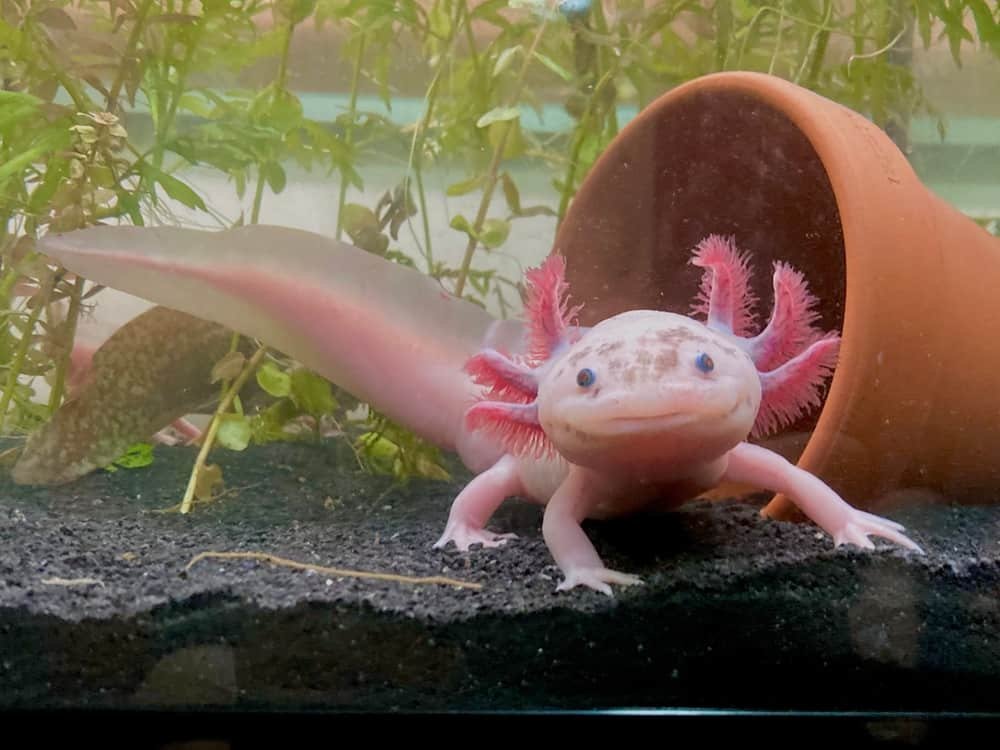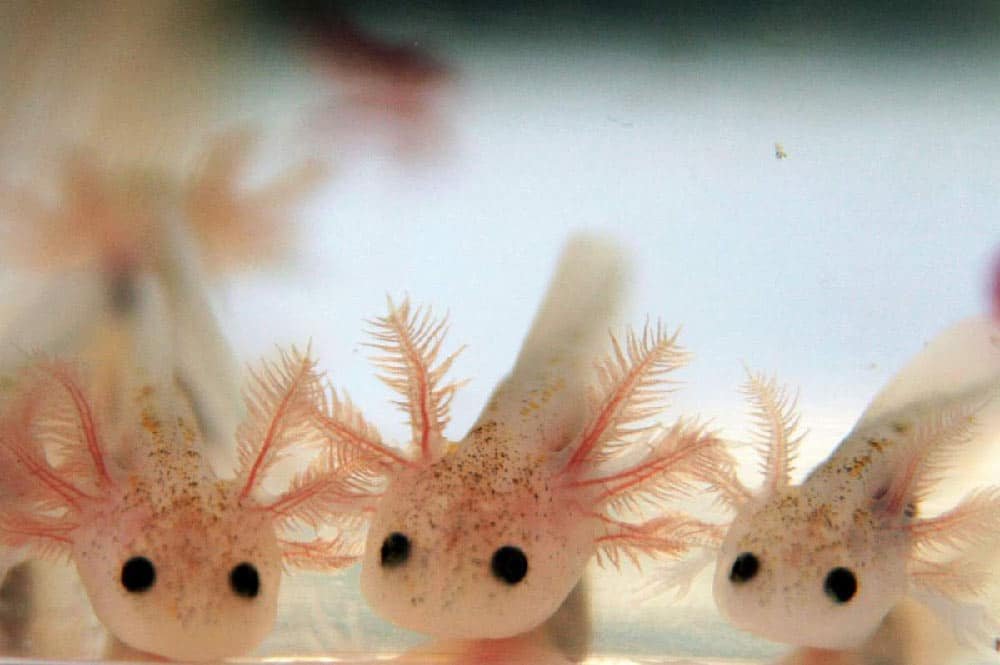Axolotls are a type of Mexican walking fish that have gained popularity as pets because they are unusual to see and require no maintenance. Native to lakes in Mexico, these amphibians are one of a kind because of their regenerative nature and their fish-like appearance, while still having limbs. Their very gentle nature, being easy to feed, and interesting features make them quite satisfactory pets to many people. This guide will walk through why axolotls make good pets, how to care for them, common questions, and the data behind the surge in popularity among pet enthusiasts.
Are Axolotls Good Pets?
Yes, axolotls are good pets for a number of reasons. Weird, low-maintenance pets that are fun to watch are especially appealing. Even though they are exotic creatures, their needs can be simple enough that even beginning pet care workers can keep them. Here are some of the main reasons why axolotls make great pets:
Exotic Appeal
With their external gills and wide smiles, axolotls are like no other common pet. They visually enthrall anyone with their different color morphs, including wild type, albino, leucistic, and melanoid. To owners of pets who would like to have something unusual, axolotls provide the rare exotic appeal.
Low Maintenance
Compared with many other exotic pets, axolotls require less maintenance. To a large extent, they do not have to be handled at all because they just enjoy being alone in their tanks. Moreover, feeding would be relatively simple: a lot of worms and brine shrimp with plenty of quality pellets.
Long Life Expectancy
Axolotls, if properly cared for could live for about 10-15 years. To those who relish keeping a pet for longer, long lives are an added advantage. In this respect, the long-lived pets compared to those of short life are more viable.
Interesting Behaviour
Axolotls are fun to watch. Perhaps the most astonishing thing that might be known about them is that, when an arm or a leg is cut off, it regenerates. They are active, and for hours, their movement around their tank or with their tankmates can be amusing.
Cost of Care
Because it takes a moderate amount of money to initially create a good environment for axolotls, they are generally cheap pets to care for. Most of the common or repeating expenses include a decent tank, good filtration, and food. Compared to other exotic pets, axolotls are rather an inexpensive and engaging companion.
Safe for Beginners
Axolotls are perfect for those beginning in the exotic pet world. So long as the tank environment is kept stable, in that the temperatures should range between 60° to 64° F, and the water conditions optimal, axolotls will require little intervention and will thrive accordingly.
Tank and Habitat Requirements
Tank Size and Setup
For axolotls, the minimum number of gallons is 20, but bigger is always better because of increased stability of the water and much more room to swim. A long shallow tank is always better than a tall one since they spend all their time at the bottom.
| Tank Size | Number of Axolotls Supported |
|---|---|
| 20 gallons | 1 axolotl |
| 40 gallons | 2 axolotls |
| 50+ gallons | 3+ axolotls |
Water Conditions
The prime factor that ensures the health of an axolotl is a stable water environment. They are sensitive to water quality; hence, efficient filtration is an issue. Regular water changes are advisable once a week at 20%, and temperature ranges between 60-64°F for mimicking their natural cold-water habitat. Axolotls are very sensitive to heat stress; hence, avoiding temperatures above 70°F is imperative.
Substrate and Tank Accessories
The substrate for the axolotls should be chosen with a lot of attention. Sand is viewed as the best substrate since it reduces the chances of impaction against the gravel in case the axolotl happens to swallow them. Hiding spots are excellent ornaments that will help create a comfortable environment. Axolotls do love plants, but use living ones or smooth artificial ones to prevent injury.
Also read more: How to write too much too soon
Diet and Feeding
What Do Axolotls Eat?
The Axolotls are carnivorous, with high-protein-based food constituting most of their diet. For feeding, live or frozen worms, brine shrimp, and sinking pellets formulated for carnivorous aquatic animals are good feeding items. A diet with proper nutritional balance is highly essential to health and life expectancy.
| Food Type | Feeding Frequency |
|---|---|
| Earthworms | 2-3 times per week |
| Bloodworms | 2-3 times per week |
| High-quality sinking pellets | 2-3 times per week |
Feeding Guidelines
The adult axolotls should be fed once every 2 to 3 days, although the young axolotls will need a little more frequency. Overfeeding is strictly to be avoided as this can only result in obesity apart from poor conditions in the water of the tank.
Health Issues
Axolotls are usually hardy and may have health problems if the surrounding environment does not come up to the mark.
Common Ailments
- Shrinking gills: Poor quality water or a too-hot-of-a-tank brings this about. Regular water testing and cooler temperatures will prevent this. Fungal infection: Axolotls may grow fungus when the water is too warm or dirty. Treatment involves removal of the axolotl for medication to clean the water. Impaction: This occurs when an axolotl has ingested gravel or other foreign substances. Using fine sand as substrate prevents impaction.
Life Span and Reproduction
Life Span
Axolotls live up to around 10 to 15 years in captivity. Longevity is based on their good care and stable environment.
Reproduction
Axolotls breed relatively easily but need to be separated with regards to males and females until they are ready to breed. Males and females can be put together, and it takes time for them to start procreating. The females can lay 1,000 eggs at one time and hatch within 10-14 days.
Legal Considerations
They are protected wildlife and are listed as very endangered species owing to their habitat loss and pollution. Several states, including California and New Jersey, have banned ownership or sales of axolotls as pets. One should take a look into the local laws regarding them before buying an axolotl for personal use.
Axolotl as Pets: Frequently Asked Questions
Are Axolotls Good Pets for Kids?
They also make good pets for older children provided their care is kept under supervision. Axolotls are low maintenance, though may not be that appealing to young children since they are non-interactive pets .
Can You Handle an Axolotl?
Axolotls are best left alone, never handled as skin is very sensitive. Axolotls should be in water but if they ever have to be removed it should be done with great caution by netting them .
How Much Does an Axolotl Cost?
The buying price of an axolotl would fall in the bracket of 30 to 50 dollars depending on color and line of breed. Setting up their tank would be another 100 to 300 dollars, size, and accessory-dependent.
How Big Do Axolotls Get?
Most axolotls grow up to about 9-12 inches in length. Their size is also partly dependent on their diet and type of care.
Conclusion
Axolotls may perhaps be that chance an individual is looking for to possess an unusual, easy, and entertaining pet. Furthermore, because most exotic pets are less demanding, the long-lived species even reach the point of being an excellent pet, be it for a novice or professional pet owners. Under proper feeding with good quality water and stable conditions, the axolotls could live up to over ten years in captivity.
Also read more: Meet the team theweeklyspooncom

